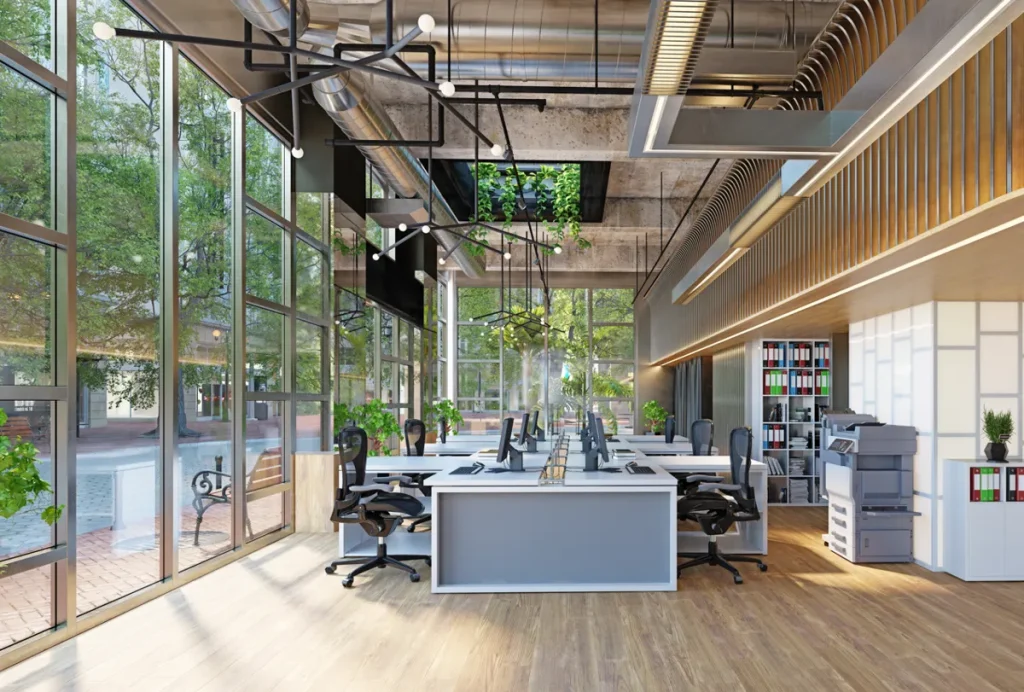
As new technologies and workplace trends emerge, legacy office buildings face the challenge of staying relevant. Outdated designs and features not only hinder functionality but can also deter tenants or lower property value. Modernizing your property isn’t just about aesthetics—it’s about creating efficient, adaptable, and sustainable spaces.
In this article, we’ll explore the top strategies to help office building managers, real estate developers, and business owners transform outdated buildings into modern workplaces that meet the demands of today’s workforce. Let’s dive into them!
Prioritize Smart Technology Integration
Smart technology is a must-have for modern office buildings. Incorporating automated systems can improve energy efficiency, enhance security, and elevate user convenience. Upgrading HVAC systems and lighting to smart, sensor-driven alternatives can help reduce energy waste.
For example, motion-sensor lighting systems ensure energy is only used when needed, resulting in significant cost savings. Smart building management systems that centralize operations are another game-changer. These platforms allow you to monitor everything from heating and cooling to water consumption in real time, providing insights to optimize efficiency.
Improve Sustainability Features
Sustainability is no longer optional—it’s an expectation. Refitting legacy office buildings with eco-friendly features benefits the environment and aligns properties with the growing demand for green workplaces. Consider adding energy-efficient windows and insulation to improve thermal performance while reducing reliance on heating and cooling.
Installing solar panels or green roofs can further lower carbon footprints and offer tenants the opportunity to operate in an environmentally conscious space. In addition, sustainable materials like reclaimed wood or recycled steel can enhance tenant appeal. For older properties, strong green credentials can be a point of differentiation in today’s competitive office rental market.
Rebuild the Design and Layout
A modern office structure must accommodate the more flexible and collaborative workstyles employees seek today. Open floor plans and multipurpose spaces are now preferred over traditional cubicles and fixed layouts. Partnering with office builders and designers is essential when reimagining a design that maximizes natural light and creates more inviting interiors. They know how to create spaces that optimize flow, flexibility, and functionality.
Professionals can also implement modern office features like standing desks, soundproof pods, and adjustable lighting for optimal user comfort. They can undertake strategic renovations such as knocking down partition walls can also foster productivity and energy among users. You can also enlist their help in incorporating biophilic elements like indoor plants and natural textures.
Optimize Doorways and Entrances With Modern Features
The entrances and doorways of your building play a crucial role in creating a modern and functional space. A well-designed entrance not only makes a strong first impression but improves accessibility and flow. Replacing standard doors with automatic sliding units, like those offered by Industrial Door, can be an excellent way to achieve this.
Automatic sliding doors provide both aesthetic appeal and practical benefits, as they allow easier movement for people and reduce bottlenecks during busy periods. These doors also come in a variety of designs and materials, making them customizable to fit any modern office aesthetic. In addition, they can be equipped with smart technology for added convenience and security.
Upgrade Tenant Amenities
Today’s businesses expect more than just office space—they’re looking for amenities that enrich their work experience. Upgrading building facilities can significantly improve tenant satisfaction and attract higher-value occupants. Consider introducing amenities like fitness centers, bicycle storage, and wellness rooms.
On-site cafes, lounge spaces, or rooftop terraces can also provide a desirable sense of community and a break from the daily grind. For many businesses focused on enhancing work-life balance, these features are highly valued—and could set your building apart from others lacking modernization.
Enhance Connectivity and Infrastructure
Modern businesses rely on high-speed, reliable networks to thrive. Outdated connectivity infrastructure can be a dealbreaker for potential tenants. Upgrading to fiber-optic internet and implementing Wi-Fi 6 technology in shared areas ensures firms operating from your building have the bandwidth they need.
The rise of remote and hybrid work also underscores the importance of coworking-friendly environments. Providing well-equipped shared workspace areas, supported by fast and stable connectivity, caters to evolving work habits while boosting tenant retention. Investing in modern security systems, like keyless access or facial recognition technology, can also reinforce tenant trust.
Modernizing a legacy office building is no small task, but the long-term benefits far outweigh the initial investment. Creating efficient, adaptable spaces that offer functionality and visual appeal ensures your property remains competitive in the evolving commercial landscape.
By prioritizing technology, sustainability, design, and tenant amenities, you can transform your legacy building into a modern workplace that attracts top-tier tenants. So don’t let your property fall behind—start modernizing today!
